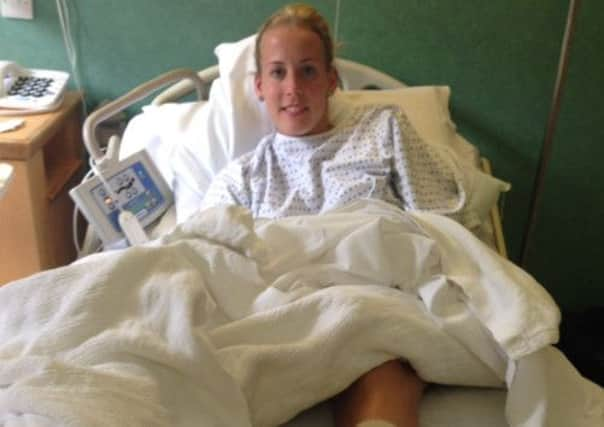Lynsey Sharp: Mystery injury caused 5 months of anxiety


That was the situation I have been in for the past five months, following what apparently started out as a minor niggle in my foot. Strains like that are often cured by nothing more than a few days’ rest, but I would rest, feel better, resume training – and then the pain would return.
So although it appeared quite superficial to begin with, it became clear that it was more substantial. Even if I went out for a ten-minute run after resting for a week or more, that would be enough for the pain to return.
Advertisement
Hide AdAdvertisement
Hide AdThe problem probably started in early May when I was in San Diego, but I really only noticed it properly when I came back to the UK. To begin with, I didn’t know whether the pain or strain was originating from my back, whether it was an Achilles problem, or something in my calf that was causing the problem in my foot.
My initial hope, perhaps expectation, was that I would be back running in a few weeks. There was my British 800 metres title to defend in Birmingham in July, a place to win in the team for the IAAF World Championships in Moscow, the London Anniversary Games and Diamond League meetings to compete in, too. But one by one those targets were missed, so as time went on the uncertainty deepened.
In one sense, having a more severe injury to deal with would have been easier. For example, even if you get something like a stress fracture, you tend to know how long you will be out for. Once the correct diagnosis is made, the prognosis follows: you are told to expect to be on the sidelines for a set number of weeks or months, and everything usually goes according to plan.
You know what the problem is. You know what you have to do to rectify it. You are on a well-trodden road to recovery, and the medical staff can assure you every step of the way that you are going in the right direction.
But I did not know what the problem was. No-one did. Eventually, late last month, I was referred to Professor Hakan Alfredson, who is a world expert in the field of tendon treatment. Yet even he, with all his expertise, was unsure of the exact problem.
He told me that all the symptoms pointed to the plantaris tendon being the cause of the problem, but that could only be confirmed by surgery. When he opened my leg, he found the plantaris had become embedded in the Achilles tendon and was causing friction and inflammation.
He had never seen a complete attachment like that before. He removed the plantaris – you can function perfectly well without it, thankfully – and without that surgery, the condition is unlikely to have gone away on its own.
The surgery went very well, and this week I got my stitches out. I can now concentrate on building up my strength, secure in the knowledge that this time the niggling pain will not return. When I begin full winter training in a few weeks’ time it will be a later start than I am used to, but I can take that in my stride.
Advertisement
Hide AdAdvertisement
Hide AdIt will simply be great to be back, after a season that was pretty close to being the exact opposite of the previous year. In 2012, I won British and European titles and competed at the Olympic Games. Not everything went right, but I made substantial progress, think I learned from the things that went wrong and hoped to build on that in 2013.
Instead, after my early-season racing programme in the USA was hampered by a chest infection, I put in all the training you would do if a return to the track was imminent – but was never able to put any of it to use. That was another consequence of the injury: not knowing how long I would be out for, I could not take the kind of break from training that might in the long run have been more beneficial.
But that’s life as an athlete, and perhaps those sudden ups and downs are what make the sport so addictive. In football, a team can cope with the loss of one or two players to injury and maintain its form, whereas in an individual sport like track and field there are those fluctuations in fortune.
There is one other issue I will have to deal with over the next few weeks as my recovery continues – finding a new coach and training group. Last season, I worked with Terrence Mahon, an American who was on the British Athletics staff. But now Terrence has gone home, as have Morgan Uceny and Anna Pierce, the two US athletes with whom I trained.
Your relationship with your coach is always a critical part your career as an athlete, and this decision will be a particularly important one for me with the Commonwealth Games coming up next year. So it is something I will aim to resolve to everyone’s satisfaction over the next few weeks, and then get back to work in the best possible frame of mind and physical state. It has been too long, and I cannot wait to get back.